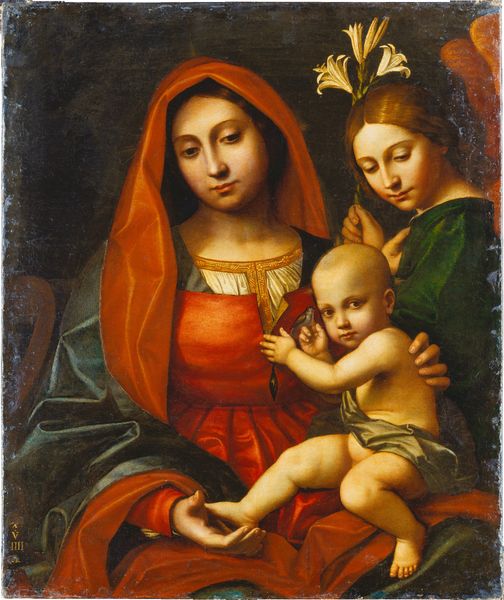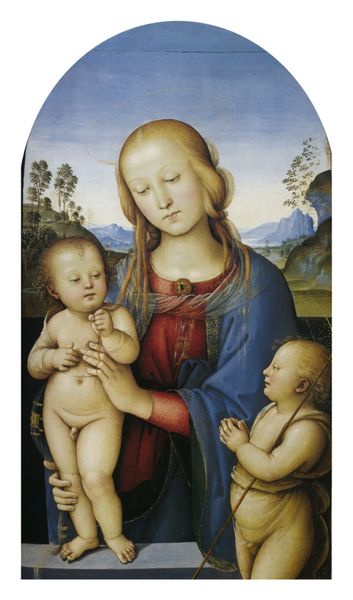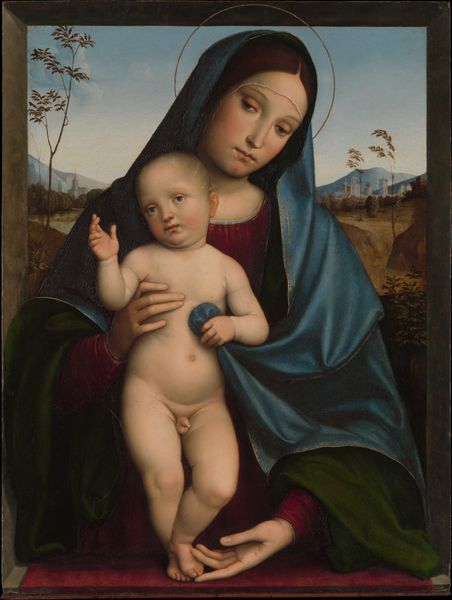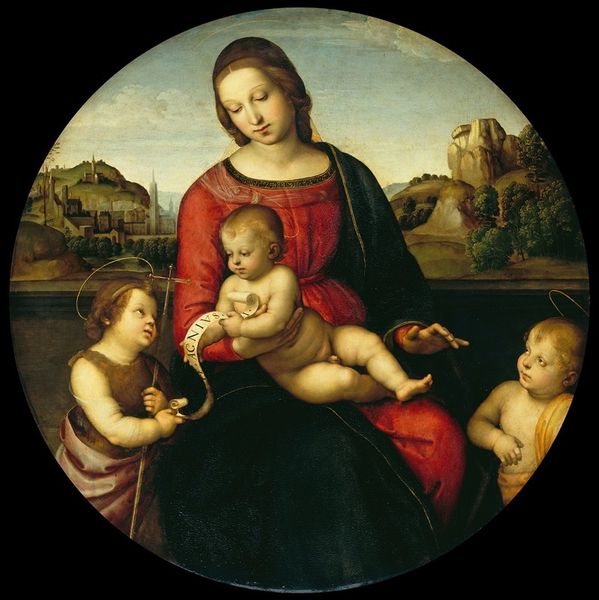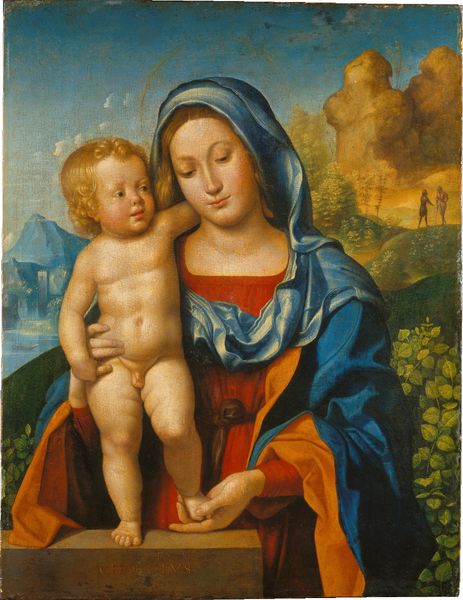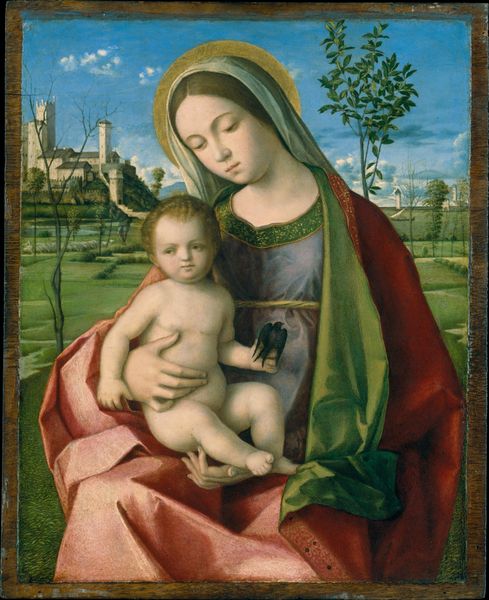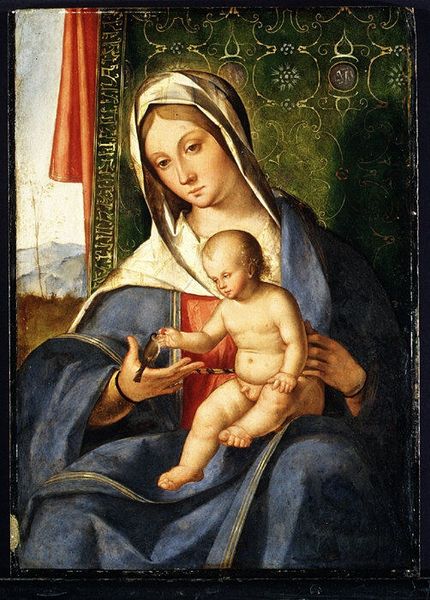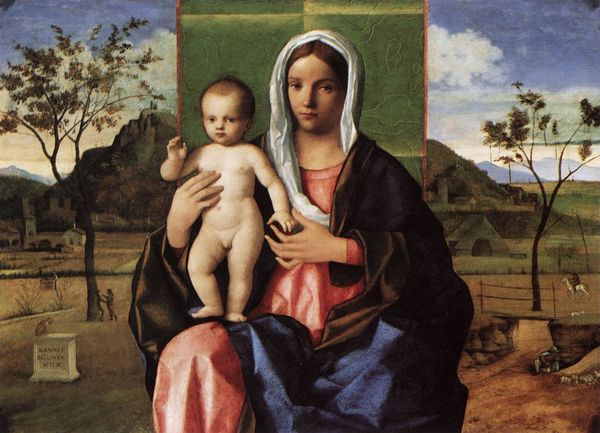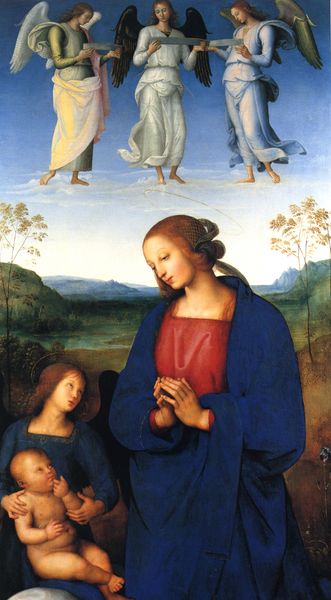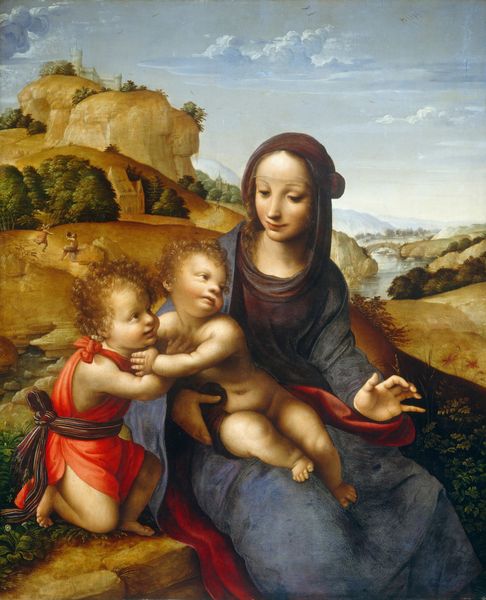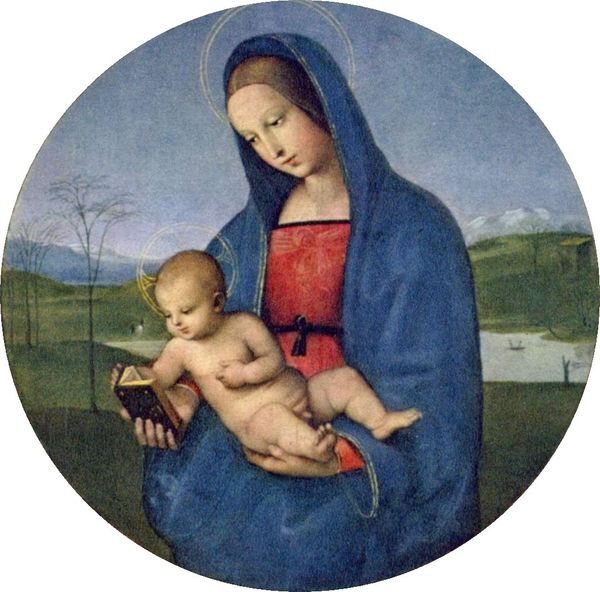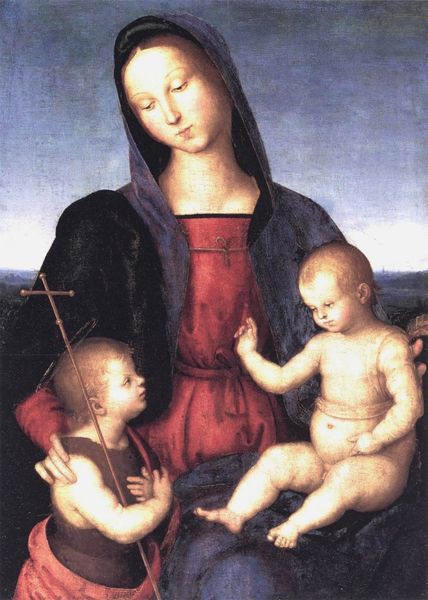
painting, oil-paint
#
portrait
#
high-renaissance
#
allegory
#
painting
#
oil-paint
#
christianity
#
history-painting
#
italian-renaissance
#
portrait art
#
virgin-mary
#
christ
Copyright: Public domain
Curator: Ah, I am instantly calmed by this painting. What do you think? Editor: A maternal figure, somber and still, holds court over a hushed gathering... but yes, there is a palpable stillness here, a carefully constructed sense of peace. Curator: The artist, Pietro Perugino, finished "Madonna of Consolation" around 1498. It’s oil on panel. Tell me what your readings are! Editor: There's an undeniable power dynamic visualized. We have Mary at the apex, rendered in intense blues and reds that demand attention. Who are these devotees in white at the base of the platform? Are they representatives of the confraternity that commissioned the work? It raises so many questions about how power and influence were visualized then. Curator: Oh, definitely! It speaks volumes about the era. I can't help but focus on the faces. Mary’s gaze, that tender melancholy… then look at the angels floating above! They seem to be both in awe and a bit restless, perhaps bored in their adoration. Do you pick up on a tension there, too? Editor: Absolutely! It highlights the constructed nature of piety. The artist positions them almost as stage props reinforcing a message but in so doing reveals their inherent precariousness and fragility. Who is to say whether they truly are angelic if some betray such weariness or nonchalance? Curator: That reminds me—look how strategically the space has been utilized. Everyone looks so demure with a distinct sense of reverence, but those flying cherubs, bless them, inject a bit of dreamlike whimsy in that otherwise tightly managed composition. Almost as if Perugino didn't fully want to buy into the High Renaissance's love for stoicism. Editor: I can also see the piece's aspiration towards order – the symmetrical composition and idealized figures communicate core tenets of Renaissance humanism. But is it genuinely comforting or just merely imposing a form of religious discipline upon its intended audience? Curator: And doesn’t art always straddle those lines? As viewers, aren’t we all just negotiating how to connect with these layered historical intentions in this given moment? Editor: Exactly! "Madonna of Consolation" reveals to me that it may have aimed for uncomplicated devotional reverence, but it’s ended up leaving me instead pondering how power operates through visual representation. Curator: I’ll now always ponder boredom within Renaissance cherubs; an image is more powerful if all actors appear believable to the human psyche.
Comments
No comments
Be the first to comment and join the conversation on the ultimate creative platform.
